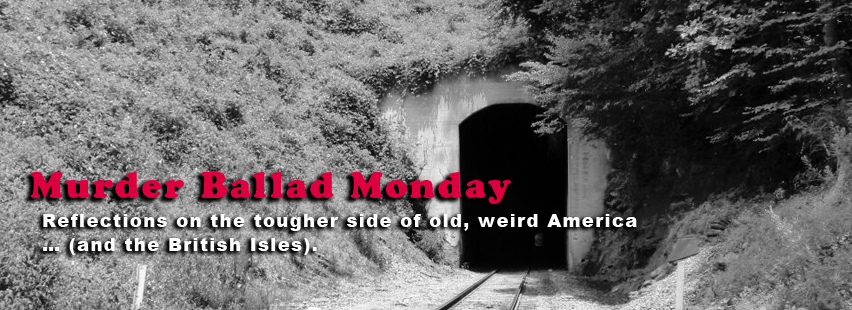“The Little Girl and the Dreadful Snake” – Conversations with Death – 6
Our darling wandered far away…
I had an odd reaction to that recent video of the rescue of a toddler running alone down the middle of a busy Highway 101 in Oregon. A old, favorite song popped into my head instantly – “The Little Girl and the Dreadful Snake.” It won’t take you long to hear why. And, for once, it won’t take a long post to get to the heart of this one. Let me get you started with the version I first heard, The New Lost City Ramblers’ 1963 recording for Folkways. (YouTube version)Our darling wandered far away while she was out at play
Lost in the woods, she couldn’t hear a sound
She was our darling girl, the sweetest thing in all the world
We searched for her but she couldn’t be found
I heard the screams of our little girl far away
“Hurry Daddy there’s an awful dreadful snake!”
I ran as fast as I could through the dark and dreary woods
but I reached our darling girl too late
Oh I began to cry. I knew that soon she’d have to die
for the snake was warning me close by
I held her close to my face, she said “Daddy, kill that snake
It’s getting dark, tell Mommy goodbye”
To all parents I must say don’t let your children stray away
They need your love to guide them along
Oh God I pray we’ll see our darling girl some day
It seems we still can hear her voice around our home
Though terribly sad, this is no murder ballad. It is rather, in our way of looking at it, a ‘Conversation with Death’; though it doesn’t strike at the heart of one’s own mortality like the namesake of our series. It intersects with at least a couple of similar songs I’ve covered here. Like A.P. Carter’s “No Telephone in Heaven,” it walks that line between this world and whatever comes next in relation to the loss of immediate family. Of course in “Telephone” it’s the parent who is gone and the child left grieving. More directly then, “Dreadful Snake” fits with “The Cyclone of Rye Cove” – a ballad written by Carter after witnessing the horrible aftermath of the tornado that destroyed the Rye Cove schoolhouse on May 2, 1929, killing twelve students and a teacher. The dead children lay together on “pillows of stone” in the rubble as their parents come to collect them in unutterable grief.
A rattlesnake may not have the lethal force of a cyclone, but this song ends like “Rye Cove” with parents crying over a dead child and hoping for a reunion in Heaven. There is something else here though that “Rye Cove” lacks. Though the little girl’s parents are not responsible for placing deadly snakes on the Earth, the song implies some guilt in that they let their child stray. Her death was primarily but not entirely the result of a cruel Mother Nature. That implied blame comes not from the listener but from the singer himself, the father. His daughter’s imagined voice around the house is a reminder both of his loss and his tragic failure. If you’ll stick with me, you’ll hear that little girl’s voice (and that snake’s rattle) is telling something a bit deeper as well. If you’d rather just move on, you can still hear a variety of wonderful versions of the song by accessing my Spotify playlist at your leisure.
“I held her close to my face…” – Albert Price, aka ‘Big Mon’
There isn’t much history for a deep dive on this one. It’s a 20th century original. Bluegrass founding father Bill Monroe wrote “The Little Girl and the Dreadful Snake” using the name Albert Price, one of his many pseudonyms. It bears a 1953 copyright, but as you’ll see below it’s likely Monroe composed it in the late 1940’s. Interestingly, it was first recorded by the Stanley Brothers as the A-side of Rich-R-Tone 1055 in 1952.
YouTube link to the Stanley Brothers version
I won’t explore the ins and outs of Monroe’s sharing the song, but it’s worth pointing out what is hiding in plain sight here. The song was so compelling that the Stanleys knew it would do well for them on records and radio even though it wasn’t their own composition. As a Billboard review of Monroe’s later recording put it, the song was “likely to attract country spins.” In those days, of course, “country” included bluegrass proper. And, indeed, that snake was charming.


![Crotalus horridus - Timber Rattlesnake - photo by Tim Vickers [Public domain] via Wikimedia Commons](https://i0.wp.com/singout.org/wp-content/uploads/2016/01/320px-Crotalus_horridus_5.jpg?resize=320%2C215)